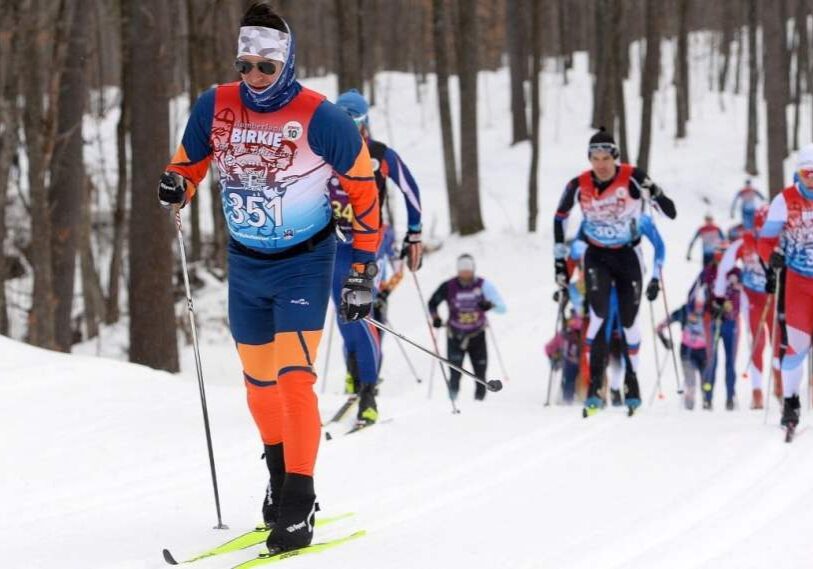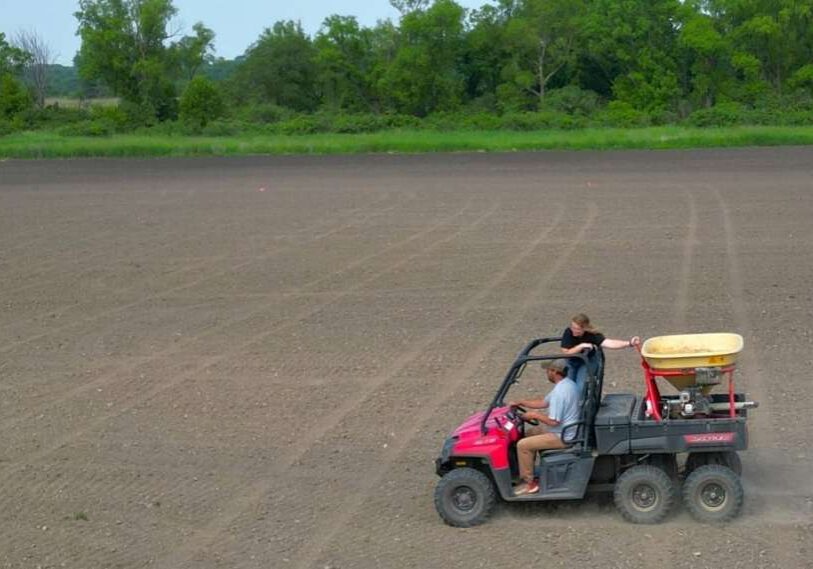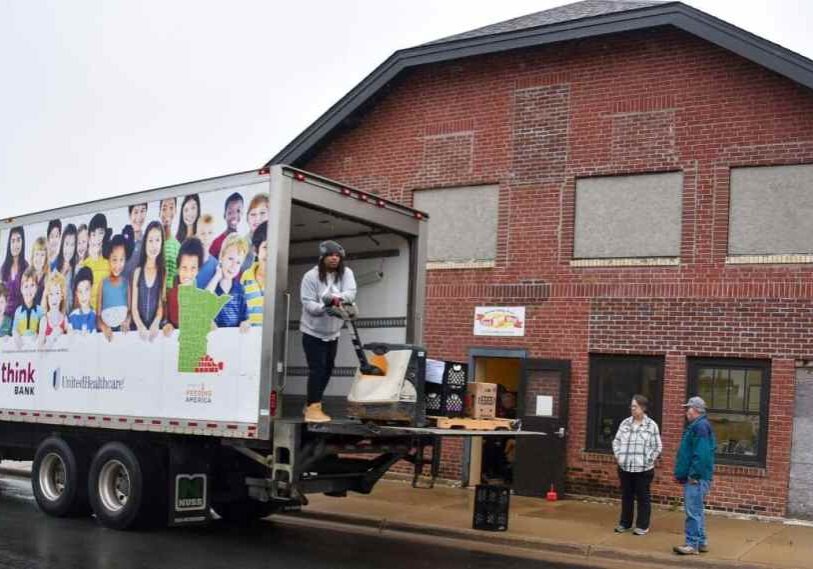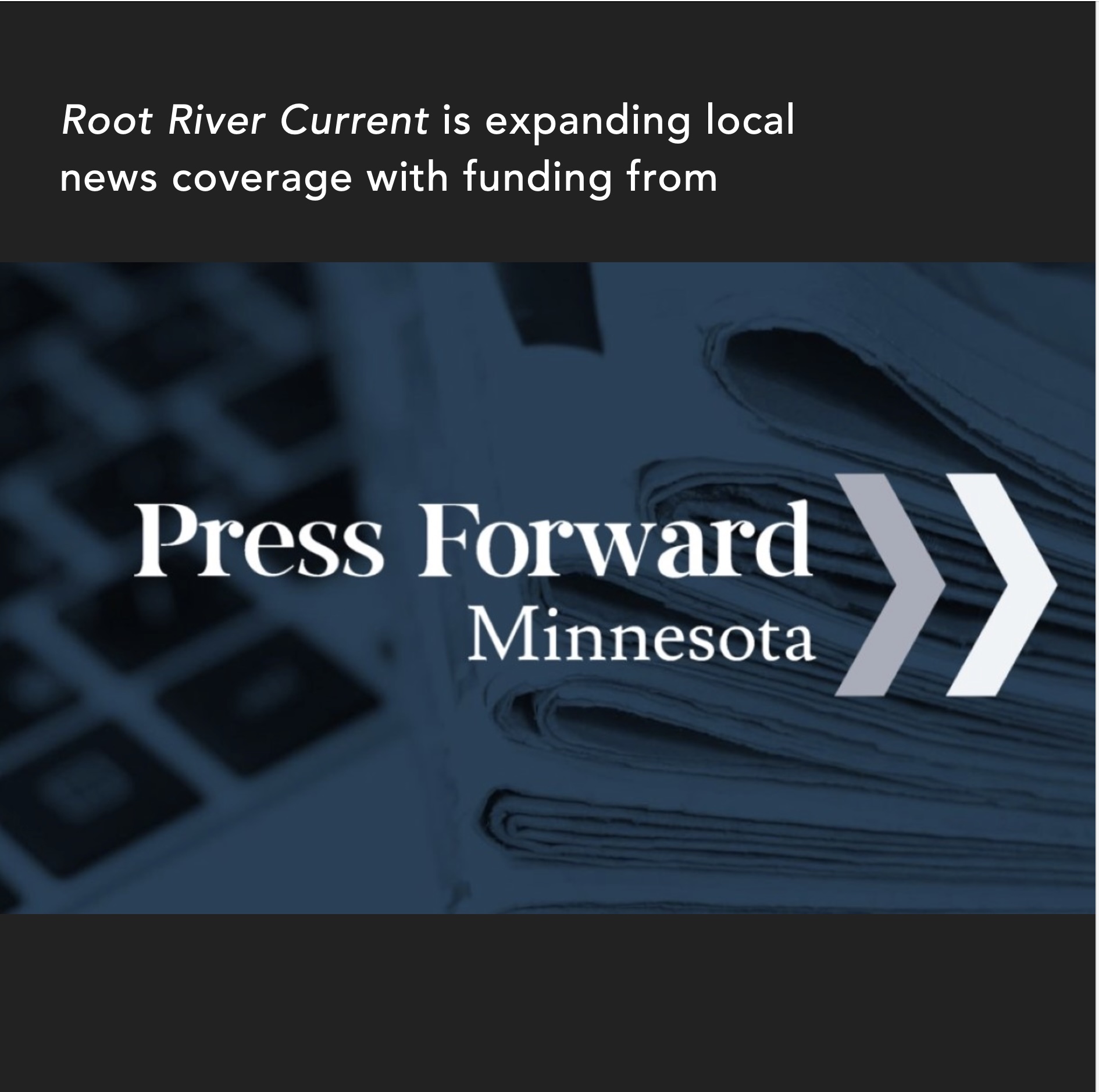In La Crescent, HELP Grant Sparks Community, Habitat Connections
Converting turf grass to prairie plants will save resources while creating pollinator habitat and improving aesthetics

LA CRESCENT — With the arrival of summer, the city of La Crescent is basking in flowering gardens, blossoming apple trees and, in 2025, 30-plus acres of native landscapes gradually taking shape.
From spring 2023 through fall 2024, Habitat Enhancement Landscape Pilot (HELP) grant funds from the Minnesota Board of Water and Soil Resources (BWSR) tripled the existing 11-plus acres of native plantings on city-owned land, establishing 12.2 acres of prairie plantings, increasing plant diversity on 7.9 acres and clearing invasive brush on 2.2 acres of dry bluff prairies.
Along the way, city officials have cut mowing costs, eliminated maintenance hazards and beautified stretches of rights-of-way, steep slopes and bits of city parks by replacing turf grass with native plants.

Jason Ludwigson, La Crescent Sustainability Coordinator.
These most-recent La Crescent projects accounted for $7,890 of the $40,000 HELP grant BWSR awarded to the Root River Soil & Water Conservation District (SWCD) in 2022 to enhance pollinator habitat in Houston County. The city’s $6,545 contribution – well over the 25% match required by the grant – included site preparation, seeding, brush removal and planting costs.
“We as a city saw the benefit of trying to work with the HELP grant and native prairie restoration,” said La Crescent Sustainability Coordinator Jason Ludwigson, whose job involves implementing the voluntary Minnesota GreenStep Cities program.
“One (benefit) is to reduce city maintenance costs. There’s quite a few open spaces within the city that city staff actively maintain – and particularly that involve mowing. A lot of those spaces are pretty steep, difficult to mow, particularly in wet conditions,” Ludwigson said. And mowing is typically a job for the less experienced, seasonal workers. “So there’s a safety consideration there.”
Ludwigson said pockets of deep-rooted native plants – five of them bordering stormwater ponds in the Pine Creek watershed – also could help to improve water quality by filtering runoff bound for the Mississippi River. That, in turn, would help to mitigate flooding and manage stormwater.
Public works staff suggested locations for some of the 16 sites – focusing on mowed, unused open areas. The city council supported the endeavor.

Teresa O’Donnell-Ebner, La Crescent City Council Member.
“Particularly in a small town, we have a limited budget. So any time we can partner and get that extra (grant) funding . . . it gives us a chance to add more to the community than we otherwise would be able to budget on our own,” said at-large La Crescent City Council Member Teresa O’Donnell-Ebner.
Funded by an Environment and Natural Resources Trust Fund (ENRTF) appropriation, HELP pilot grants aimed to restore and enhance strategically located, diverse native habitats to benefit pollinators and beneficial insects, and overall plant and animal diversity.
“We are a community of walkers. We have people that are always out walking their dogs, pushing strollers, walking with friends. Being able to add these prairie plantings in different locations throughout the town, it really is a very nice addition to those pathways and gives some points of interest,” O’Donnell-Ebner added.
In La Crescent, forb-heavy seed mixes tailored to site conditions will attract a variety of pollinators, beneficial insects and birds. The sites also will provide habitat for salamanders, lizards and turtles.

Dan Wermager, Root River SWCD technician.
“We’re mimicking nature . . . Restoring nature, in this case,” said Root River SWCD technician Dan Wermager, who applied for the grant. He worked with city staff to finalize seed mixes and locations, cross-referencing maps to prioritize sites where public land and suitable pollinator habitat aligned.
The seed mix for one stormwater basin site contained nine grass, six sedge, three rush and 18 wildflower species. A drier site mix contained seven grass, two sedge and 27 wildflower species. Wildflower mixes are chosen to ensure that something is blooming spring through fall.
Wildflowers seeded in 2023 bloomed later that year. Signs explain what’s happening at high-profile sites where plants are becoming established. O’Donnell-Ebner said the sites can show residents what might grow in their own yards.
Ludwigson fielded calls from about 10 residents seeking advice about completing similar projects on their own. Five residents installed projects, which ranged from a rain garden to an entire backyard that used the same seed mix as an adjacent HELP grant-funded park planting.
As he has traveled throughout the state, Ludwigson said he has seen thousands of idle, mowed acres that would be ideal candidates for the Habitat Enhancement Landscape Program. When he delivers presentations about La Crescent’s prairie plantings, Ludwigson encourages other communities to consider doing something similar.
“I think the biggest deterrent is a cultural deterrent,” Ludwigson said, referring to the idea that only manicured lawns and gardens are acceptable. “(Establishing a project) gives people the societal permission,” he explained. “‘Oh, it’s OK. The city’s doing it; I can, too.’ That’s where it can be most impactful.
Minnesota programs helping La Crescent’s sustainability efforts
 HELP Pilot and Program: The cost-share Habitat Enhancement Landscape Pilot grant program was funded by an Environment and Natural Resources Trust Fund (ENRTF) appropriation. HELP aimed to restore and enhance strategically located, diverse native habitats to benefit populations of pollinators and beneficial insects, and overall plant and animal diversity.
HELP Pilot and Program: The cost-share Habitat Enhancement Landscape Pilot grant program was funded by an Environment and Natural Resources Trust Fund (ENRTF) appropriation. HELP aimed to restore and enhance strategically located, diverse native habitats to benefit populations of pollinators and beneficial insects, and overall plant and animal diversity.
HELP has since moved out of the pilot stage; it is now known as the Habitat Enhancement Landscape Program. The Minnesota Legislature in 2023 allocated $4 million to BWSR for the program. BWSR received requests totaling $7.9 million from 38 organizations and local governments; it awarded $3.6 million to 13 organizations and local governments. The pilot required a 25% match; the program requires a 10% match.
Root River SWCD HELP grant-funded work: With the $40,000 HELP grant, the Root River Soil & Water Conservation District (SWCD) provided $25,000 in direct financial assistance. The balance covered the SWCD’s technical and administrative time.
In addition to the work in La Crescent, the grant supported work to improve native cover — which can shelter pheasants and deer — and pollinator habitat on existing Reinvest in Minnesota (RIM) Reserve easements in Houston County. During spot checks of RIM easements, SWCD staff noticed that non-native plants, cool-season grasses and weeds were overtaking some sites. “That wasn’t the intent of the easements. We wanted to preserve more native habitat. If we could find a way to convert them back to natives without being a huge burden on the landowner, it seemed like a good opportunity,” said Root River SWCD technician Dan Wermager.
Those four RIM sites involved:
- 16.5 acres of new seeding
- 2.6 acres of new seeding plus 1.2 acres of tree and shrub planting
- 3.68 acres of new seeding
- 0.78 acre of tree and shrub plantings
New seeding involved first killing the cool-season grasses, weeds and invasive non-native species.
Minnesota Green Step Cities program: La Crescent has been a part of the Minnesota Pollution Control Agency’s voluntary challenge, assistance and recognition program since 2015. The goal of the free, continuous Green Step improvement program based on 29 best practices is to help cities achieve sustainability and quality-of-life goals. The actions focus on reducing energy use and encouraging civic innovation.






